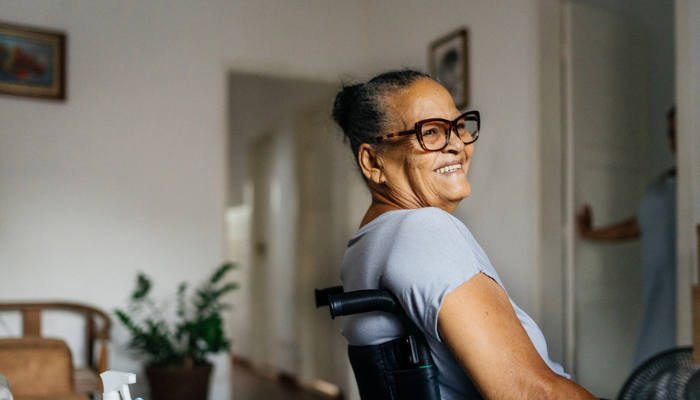
16 Jan The U.S. healthcare system is ill-prepared for the anticipated increase in seniors with disabilities
The U.S. healthcare system is unprepared for the imminent surge in seniors with disabilities, a consequence of the aging baby boomer population entering their 70s, 80s, and 90s. This lack of readiness was glaringly evident during the COVID-19 pandemic, where older adults with disabilities faced challenges in accessing treatments, resulting in significant fatalities. Two initiatives are currently being undertaken by the Department of Health and Human Services and the National Institutes of Health to rectify these shortcomings.
One initiative focuses on enhancing access to medical treatments, equipment, and web-based programs for individuals with disabilities. The other acknowledges the unique health concerns of people with disabilities, including older adults, necessitating increased research and attention. According to Lisa Iezzoni, a professor at Harvard Medical School and a trailblazer in disability research, this signifies a vital endeavor to enhance healthcare equity for this demographic.
Recent findings by Lezzoni highlight pervasive biases among physicians, with 82 percent believing that individuals with significant disabilities have a lower quality of life, and only 57 percent expressing willingness to care for disabled patients. Furthermore, there was a noted deficiency in physicians’ comprehension of their responsibilities under the Americans With Disabilities Act (ADA), affecting the delivery of equal access and accommodations for disability-related needs.
The consequences of these issues include poorly equipped medical facilities, leading to inadequate preventive care, poorer health outcomes, and increased barriers to treatment for people with disabilities. Amid the pandemic, people with disabilities and elderly individuals were unjustly categorized as low priorities in crisis standards of care, illustrating systematic discrimination against these groups within healthcare environments.
In response, the Department of Health and Human Services proposed a rule in September, updating Section 504 of the Rehabilitation Act of 1973, to explicitly prohibit discrimination against people with disabilities. The rule establishes enforceable standards for accessible equipment and addresses electronic medical records, apps, and websites’ usability. The NIH has identified individuals with disabilities, particularly older adults, as a demographic experiencing health disparities. This designation has created fresh funding prospects to tackle obstacles and structural challenges in this population.
However, a significant challenge lies in the fact that many seniors with impairments do not identify themselves as disabled, hindering their integration into the disability rights movement and their awareness of rights under the ADA and Rehabilitation Act. It is crucial to make efforts to include older adults in communities focused on disability and to provide them with education about their rights during this significant period of change.


